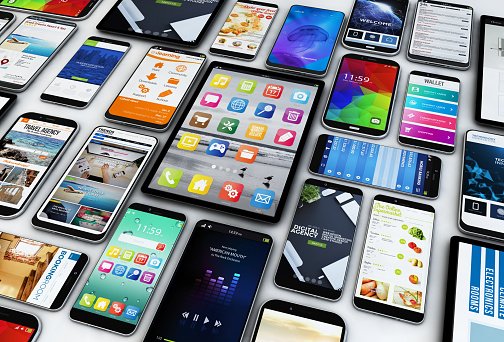What is the device driver software – for phones and computers


What is the device driver software – for phones and computers
What is the device driver ? There is also a part of the computer that is always overlooked. Yes, you read it right, here we will learn about an important part also called computer driver or device driver.
Do you know what a computer driver is and how it works? If not, then today’s article will be very interesting for you because today we are going to know all those little and big things about a computer driver that are very important.
When it comes to drivers, it doesn’t mean at all the drivers you see every day on the roads. A device driver is a program in your computer that controls a piece of hardware connected to your computer.
Almost everything in a computer requires a device driver for them to function properly. If a piece of hardware does not contain a driver, or does not contain the correct driver, then that piece of hardware is completely useless for the sold parts of the system.
It would be like putting a kid in the car and asking them to drive. They have no idea about the car and drive it without any instructions. Device drivers do the same thing in your computer, they give a set of instructions to the computer on how to use the hardware properly.
What is the device driver
Device drivers are also called computer drivers or device drivers. This is a set of files. It helps different computers to communicate with the operating system.
Without drivers, the computer cannot send and receive data. Where the data is sent to the printer.
If a suitable driver is not installed, the device will not function properly.
Types of computer drivers
Device drivers are actually tiny computer programs that allow operating systems to communicate with the hardware that is connected to your computer.
By the way, there are many types of device drivers for different computers. At the same time, according to the basic functions of the computer, there are some specific drivers that should be present in all computers. Let’s know about them.
BIOS
BIOS (Basic Input/Output System), is the simplest computer driver out there and is designed according to the first program that runs when the computer is turned on.
This BIOS is stored in the memory built into the motherboard and is designed to operate the devices connected to the computer, namely hard disk drives, video display output, keyboard and mouse.
motherboard drivers
Motherboard drivers are small programs read by Windows or Linux that allow basic computer functions within the same operating system.
These drivers typically include programs that allow the broadband ports, USB ports, and input/output ports for mouse and keyboard. Depending on the make of your motherboard, these drivers may also contain some basic drivers for video and audio support.
BIOS is not like motherboard drivers at all .
Device drivers
Device drivers are programs designed to allow parts of a computer’s hardware, such as expansion slots, to run in a computer.
Video cards, sound cards, network cards, and other expansion cards come with driver disks to make hardware installation easier. Other devices, such as some types of digital cameras and MP3 players, have computer drivers programmed into them in addition to their software, making them easier to use on personal computers.
Virtual device drivers
Virtual device drivers are very different from most drivers. Where in the majority of drivers, pieces of hardware are allowed to work with a particular operating system, virtual device drivers simulate a piece of hardware and essentially trick the computer into thinking it is reading. Do only one piece of actual hardware.
One particularly common use is for these virtual device drivers. The ISO files are simulated in a CD or DVD drive without any physical discs, as one of these drivers is emulated .
How does the driver work?
The main task of a device driver is to act as a translator between the operating system and the device. The operating system wants to communicate with the device mainly for two reasons, which are to send data and receive data.
But the problem with this is that the operating system is software and the hardware is hardware. They both use different languages and do not understand each other’s language.
In such a case, the driver plays the role of an interpreter between these two so that both can easily communicate with each other.
First of all, the operating system explains what the driver wants to send or receive from the device. Now device drivers understand the requirements and explain the devices further.
In this, keyboard, scanner , printer etc. called peripherals and device drivers or device drivers help these peripheral devices to be associated with the operating system (OS).
Let’s understand with an example how the driver works:
Let’s say you have to print something that requires a printer app. First, this application calls a function that is executed by the operating system. Next, the operating system calls the function that the driver performs and then the driver communicates with the printer.
Then it gets the required data and sends it to the application through the operating system.
Let’s understand the drivers in a more simplified way:
1. It is not at all necessary that the companies that design the device write drivers. There are many such cases, where the device is designed according to a published hardware standard. This means that Microsoft can also write the driver, and the device designer does not even need to write any driver.
2. Not all drivers connect directly to a device. For a specific I/O request (such as reading data from a device) multiple drivers are placed in a stack, which participate in that request.
This group can be visualized in a traditional way where the first participant is at the top and the last participant is at the bottom. In this, some stack drivers can participate by converting this request from one format to another.
These drivers do not connect to the device directly; They simply process the request and pass the request to the drivers at the bottom of the stack.
3. The only driver of that stack which is directly connected to the device is the function driver; Whereas the drivers that perform auxiliary processing are called filter drives.
4. Some filter drivers notice and record that I/O information but do not actively participate in it. For example, some filter drivers act as validators to ensure that other drivers in the stack handle I/O requests correctly.
Windows Driver Types
There are two basic types of drivers for Microsoft Windows drivers:
User mode drivers
It is implemented in user mode, and usually provides an interface between a Win32 application and kernel mode drivers or other operating system components.
For example, in Windows Vista, all printer drivers implement user mode.
Kernel mode drivers
It is executed in kernel mode, and is part of the executive. It contains kernel mode operating system components that manage I/O, Plug and Play memory, processes, threads, security, and more.
Kernel mode drivers are usually layered. In general, higher-level drivers typically receive data from applications, filter that data, and then pass it to a lower-level driver that supports hardware functionality.
Some kernel mode drivers are also WDM drivers, which confirm the Windows Driver Model (WDM). All WDM drivers support Plug and Play and Power Management. WDM drivers are already source-compatible (but not binary compatible) across Windows 98/Me and with Windows 2000 and later operating systems.
Like operating systems, kernel-mode drivers are implemented as separate modular components that have a well-defined set of required functions. All kernel-mode drivers provide a set of system-defined standard operating procedures.
Types of kernel mode drivers
There are three basic types of Kernel mode drivers . They are the highest, middle, and lowest level. Every driver is a little different, but they differ greatly in their functionality.
1. Highest level drivers
High-level drivers include file system drivers (FSD) that support file systems, such as:
- NTFS
- File Allocation Table (FAT)
- CD-ROM File System (CDFS)
High-level drivers always rely on support for basic lower-level drivers, such as mid-level function drivers and lower-level hardware bus drivers.
2. Intermediate drivers
These are drivers such as a virtual disk, a mirror, or a device type-specific class driver. Intermediate engines rely on support for basic lower level engines. Intermediate drivers are divided in the following ways:
3. Drivers function
It controls certain peripherals on the I/O bus.
4. Filter drivers
They insert themselves into the job engines above or below.
5. Bus drivers
It presents a set of sub-devices to which filter drivers, functions, or higher-level filters can still attach themselves.
For example, a driver that controls a multifunctional converter that has an internal set of heterogeneous devices is called a software bus driver.
6. Any driver category provided by the system
They export a system-defined mini-class/class interface, in fact, an intermediary drive with one or more associated minidrivers (also called minidrivers).
Each associated class/minidriver pair provides functionality equivalent to a job driver or program bus driver.
3. Lowest level of drivers
It controls the I/O bus to which the peripheral devices are connected. Lower level engines are not dependent on lower level engines.
Hardware bus drivers are provided by the system and usually control the dynamically configurable I/O buses.
Hardware bus drivers work with the Plug and Play Manager with which they initialize and reconfigure system hardware resources, and all sub-devices connected to the I/O buses they control the driver.
These hardware resources contain mappings to device memory and interrupt requests (IRQs). (Device bus drivers take in some of the functionality provided by the HAL component during startup of the Windows NT-based operating system, which predates Windows 2000.)
4. Old engines
These are actuators that directly control a physical device. These are the lower level engines.
What is the driver
There are some drivers that are not associated with any hardware device.
For example, let’s say you had to write a tool that could access core OS data structures, which can only be accessed from code running in kernel mode.
You can do this by splitting this tool into two components.
The first component runs in user mode and introduces the user interface. While the second component runs in kernel mode and has access to basic operating system data.
A component that runs in user mode is called an application , and a component that runs in kernel mode is called a program driver .
The software driver is not associated with a device at all.
Software drivers always run in kernel mode.
The main reason for writing a driver is that it allows access to protected data that is only available in kernel mode. But device drivers do not always need to access kernel mode data and resources. While some device drivers work in user mode only.
How to check computer drivers for your computer?
If you want to check the status of your computer drivers, you can use your system’s Device Manager for this:
Let’s know how to do it.
1. On the keyboard, press the Windows logo key and the R key at the same time to invoke the Run box.
2. Type devmgmt.msc and hit Enter to access Device Manager.
3. Here you can check any given entry to expand device/driver status.
Note Here you may see a common issue when you see a yellow exclamation mark on the device. This indicates that Windows has detected some problems with this device.
While to solve it, we have to update its device driver, which you can right-click on and choose the updated driver.
Why do we need the latest drivers?
Oftentimes, there are so many changes in operating systems that the hardware is dealt with. When things like this happen, we have to update the drivers, so that they can correctly translate the new commands, and your hardware can also understand them.
Oftentimes your hardware has to learn a lot. for example. Your video card will have to learn about the new 3D graphic if you want to use new technologies.
Whereas, to make your video card capable of this, the manufacturer will simply have to release an updated driver that explains how you can display this new type of graphic. While without the latest driver, your video card cannot properly run that new technology.
How do you locate the right software or drivers for your computer?
Here I have talked about some of these methods, so that you can download drivers by locating them from the Internet.
Device recognition
Before searching for a driver, keep this information about your hardware manufacturer and model. If you are looking for software or drivers for an internal device for your computer, you can find them in the support section of the device manufacturer’s website.
You can also find it in those CDs or DVDs that you would have had while buying the computer.
download site
If the manufacturer who made your hardware still works, you may see their drivers listed on their webpage.
On the other hand, if the hardware manufacturer is no longer working, or their drivers are not currently available, you can use drivers from third-party companies that have good user ratings.
How to update computer drivers or device drivers?
If you want to update your device drivers, below I have provided three easy steps, which you can use.
Method 1: Update the drivers through the manufacturer’s website
You can update your device driver manually by visiting the device manufacturer’s website, then searching for the latest correct driver. While choosing a driver, keep in mind that the driver is compatible with your exact device model and OS version.
Once this device driver is downloaded into your system, you can double-click on the downloaded file and you will have to follow the on-screen instructions to be able to install the driver.
Method 2: Update drivers using Device Manager
1. First of all you have to go to Device Manager on your computer.
2. Double click to find this device in a particular entry, then you have to right click on the device and then select Update driver software.
3. Click Search automatically for updated driver software.
4. Wait for Windows to detect all updates and then follow the on-screen instructions to be able to install this update.
Often times, Windows cannot detect driver updates automatically, in such a case, you have to take some actions so that you can update the device driver. Like third party software.
Method 3: Update Drivers Automatically with the Help of Third-Party Software Like Driver Easy (Recommended)
If you lack the time, patience, and computer skills to update the driver manually, you can use a third-party program like Driver Easy.
Driver Easy is a program that automatically recognizes your system and also searches for suitable drivers for it. Here you do not need to know what system you are using, which operating system you are running, etc. At the same time, there is no chance of installing the wrong driver here. This program takes care of everything.
1. Download and install Driver Easy.
2. Run Driver Easy and click Scan Now. Driver Easy then scans your computer and detects any driver issues or outdated drivers.
3. Then click the Update button so that it will automatically download the correct driver version for your devices.
Or you can click on Update All which automatically downloads and installs all missing or outdated drivers in your system. But for this feature, you have to buy the Pro version of this software.
What did you learn today
I hope you liked my article What is a Device Driver (What is a Device Driver) . I have always been trying to provide complete information about a computer driver for my readers so that they do not have to search any other sites or the Internet in the context of this article. This will also save their time and they will also have all the information in one place.
If you have any doubts about this article or if you want there to be some improvement in it, you can write low comments on it.
If you liked this post, what is device driver or learned something, please share this post on social networks like Facebook, Twitter, etc.



